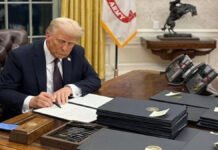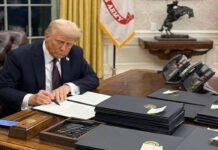The recent shift in Australia’s trade policy marks a pivotal moment in US-Australia relations, especially in the agricultural sector. Australia’s decision to lift certain restrictions on American beef imports has been hailed as a landmark win for the Trump administration’s trade agenda. This bold move signals not only a renewed trust in American beef safety but also the dismantling of long-standing trade barriers that have limited US exports in the region. The implications for the global beef market, bilateral diplomacy, and the cattle industry are substantial.
Australia’s Decision to Remove Beef Import Restrictions: A Trade Breakthrough
Australia’s government has announced it will ease import restrictions on US beef, a decision that has reverberated throughout the international trade community. The move overturns previous cautious stances rooted in biosecurity concerns, particularly regarding the threat of Bovine Spongiform Encephalopathy (BSE), commonly known as mad cow disease.
This change comes after rigorous monitoring protocols and scientific reviews conducted by both nations, which collectively support the conclusion that American beef is safe, reliable, and of high quality. The US Department of Agriculture’s enhanced traceability systems for cattle, including comprehensive tracking from Mexico and Canada, have been pivotal in reassuring Australian authorities.
President Trump’s Statement: A Victory Over Trade Barriers and Science Misconceptions
US President Donald Trump celebrated Australia’s policy change as a major triumph in breaking down ‘trade barriers created against science.’ Trump emphasized that the decision validates the safety and superiority of American beef, positioning the US as a key beef supplier to Australia moving forward.
Trump’s assertion reflects his broader trade strategy, which aggressively targets protectionist measures and champions fairer, science-based trade agreements. His administration views this outcome as a testament to effective trade diplomacy and a stepping stone toward expanding US agricultural exports.
Australian Government’s Position: Biosecurity Standards Remain Firm
While the removal of restrictions signifies progress, the Australian government maintains a strong stance on biosecurity. Agriculture Minister Julie Collins affirmed that the easing of import rules will not compromise Australia’s stringent biosecurity policies.
Collins highlighted Australia’s satisfaction with the US’s improved disease monitoring and cattle identification systems, including the capacity to track animals originating from neighboring countries with different disease risk profiles. These measures provide the confidence necessary for Australia to safely open its market while protecting domestic livestock and consumers.
Opposition Concerns: Potential Risks to Public Health and Industry Stability
The decision has not been without controversy. Prominent Australian opposition figures, notably MP David Littleproud, voiced strong reservations. Littleproud speculated that the policy change might be politically motivated, aimed at appeasing President Trump rather than prioritizing Australia’s health and economic interests.
He warned that the expedited approval process might inadvertently expose the country to risks, including the potential introduction of mad cow disease, which could severely damage Australia’s cattle industry—one of the nation’s most valuable economic sectors.
Industry Response: Confidence Tempered by Caution
The CEO of Cattle Australia, Will Evans, expressed cautious optimism regarding the government’s decision. He stated that the industry trusts the Department of Agriculture’s scientific assessments, acknowledging the rigorous standards in place.
However, Evans also stressed the catastrophic consequences if a disease outbreak were to occur. The Australian beef sector, valued at approximately $75 billion AUD, could face devastating losses if BSE or other livestock diseases were introduced through imports.
Economic Dynamics: American Beef Prices, Australian Demand, and Currency Impact
Despite the policy shift, the actual demand for American beef in Australia is expected to remain modest in the near term. Several economic factors contribute to this outlook:
Rising beef prices in the US: Severe droughts and cattle shortages have driven up American beef prices, making imports less competitive compared to Australia’s abundant local supply.
Australian dollar weakness: Currency fluctuations have rendered US beef more expensive for Australian buyers.
Local market preference: Australian consumers and businesses continue to favor homegrown beef, which remains more affordable and readily available.
This complex economic landscape means that, while trade barriers have been lowered, market realities will dictate the pace and scale of US beef penetration into Australia.
Broader Trade Context: Revisiting the 20-Year-Old Free Trade Agreement
The easing of beef import restrictions arrives at a critical moment as Australia and the US reconsider aspects of their two-decade-old Free Trade Agreement (FTA). Talks have intensified to modernize and possibly expand the agreement to reflect current economic and geopolitical realities.
A high-profile meeting between Australian Prime Minister Anthony Albanese and former President Trump is anticipated, with trade discussions likely to feature prominently on the agenda. This encounter could further solidify cooperation and address outstanding trade issues, including agricultural exports, tariffs, and regulatory alignment.
Implications for Global Beef Trade and Bilateral Relations
Australia’s decision to relax beef import controls on the US signals a broader shift toward strengthened bilateral economic ties. It may encourage other nations to reevaluate trade restrictions grounded more in politics or outdated science than in current evidence.
Moreover, the development showcases how trade diplomacy and science-based policy can intersect to produce outcomes beneficial to both nations’ economies and industries.
For the US, this victory enhances its position as a global beef exporter. For Australia, it represents a balancing act between embracing trade opportunities and safeguarding its renowned biosecurity standards.
Looking Ahead: Monitoring, Market Dynamics, and Policy Evolution
Moving forward, close monitoring of beef imports will be essential to ensure no threats emerge from the expanded trade. Both nations will likely enhance transparency, share data, and maintain rigorous surveillance to guard against disease.
Market factors such as climate variability, currency trends, and consumer preferences will continue to shape demand for imported beef. The potential renegotiation or upgrading of trade agreements between the US and Australia could also pave the way for more fluid exchange of goods, benefiting exporters and consumers alike.
In this context, stakeholders from government officials to industry leaders must remain vigilant, adaptive, and collaborative.
















